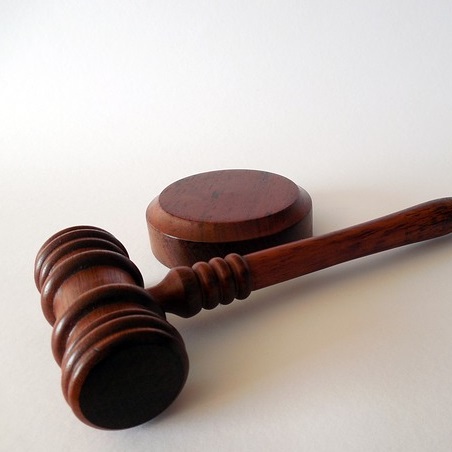Brand Enforcement: Actionable Steps Brands Can Take Against MAP Violators


In the following blog series, “Protecting Your Brand on Amazon“, we address common concerns from copyright / trademark infringement to MAP violations and provide brands with the ammunition they need to protect themselves against these types of attacks.
Be sure to check out:
Part 1 – Policing Your Brand on Amazon: Copyright & Trademark Infringement
Part 2 – Brand Protection on Amazon Against Unauthorized Sellers
In Part 3 of our series, we interview experts at Thorn Crest, a brand protection company on how brands can not only identify MAP violators but what actionable brand enforcement steps they can take against them.
 In July 2015, Amazon surpassed Walmart to become the largest retailer in the world. In order to maintain a premium brand, retailers must regulate consistency and quality in all products.
In July 2015, Amazon surpassed Walmart to become the largest retailer in the world. In order to maintain a premium brand, retailers must regulate consistency and quality in all products.
Unfortunately, Counterfeiters & MAP violators are the two major culprits on Amazon that can destroy a brand.
Kathleen Walker, Co-Founder / Managing Director at Thorn Crest, has over 20 years of legal experience including practice at the top rated litigation firm in the country and as General Counsel to an award-winning consumer electronics company.
Because Amazon “commingles” products, counterfeit product(s) fall into the same bin as genuine product(s). Commingling inventory is essentially pooling your inventory with the inventory of other sellers at Amazon’s fulfillment center.
A consumer purchasing product from an authorized retailer may be shipped a product from a counterfeit seller, thereby resulting in a poor consumer experience.
“Poor consumer experiences lead to poor Amazon reviews – Amazon reviews are the new Consumer Reports,” Walker said.
“Amazon does not police counterfeit products – it is the brand’s responsibility. Any brand that is counterfeited must make test buys of suspected counterfeit product on Amazon and report the counterfeit seller to Amazon. Amazon will remove the seller of confirmed counterfeit product and refund the purchase price. Due to commingling product, only Amazon is aware of the seller that provided the product.”
“An active relationship with Amazon’s legal department is crucial to eradicating counterfeit product.”
According to Walker, all premier brands should have a MAP policy with each retailer selling its product. If the brand uses distribution, distribution should be limited and each distributor should provide an “authorized retailer” agreement to all retailers that sell product.
“Through an authorized retailer agreement, the brand can approve each retailer that sells its product brought through distribution. The approved retailer agreement requires, among other things, that the seller abide by MAP (where legally permissible) and does not sell product on Amazon and other marketplaces. Because Amazon sales are high margin sales for brands, brands should prohibit retailers from competing with the brand on Amazon.”
Often, retailers are aware of the prohibition of selling on Amazon and seek to open an Amazon store under a different name. As we now know, because Amazon will not enforce MAP, the brand is left to police their own MAP.
“To combat retailers selling under a different store name, product serialization is suggested. As with counterfeits, the brand must make a test buy. If the product is serialized, the brand may track the sale of that product back to the original purchaser and take appropriate remedial measures.”
“The failure to maintain MAP creates a discount brand – while everyone enjoys a bargain, premier brands do not want to be know as a discount brand.”
“The failure to maintain MAP also creates ill-feelings between retailers who do abide by the brand’s MAP policy.
“By failing to maintain MAP, the brand’s compliant retailers are disadvantaged and lose the “buy box” on Amazon to retailers who fail to comply with the brands policy. For brands seeking to sell to big box retailers or to remain in big box retailers, it is imperative to enforce MAP.”
A good example of why MAP enforcement is so important is to look at Best Buy:
Best Buy has a policy to match online prices. If a brand is not enforcing MAP (or counterfeits) then Best Buy is competing with those counterfeiters and MAP violators. If Best Buy continues to match such prices, they will eventually lose margin and quickly drop the brand.
“There are a number of companies that specialize in MAP enforcement, usually through the use of software that scans the web on a daily basis,” Walker said.
“Additionally, there are companies, such as ThornCrest that specialize in brand protection programs that target counterfeiters and MAP violators on all levels from running test buy programs to raiding counterfeit manufacturers in China.
A successful brand protection program includes:
Brands can police MAP through:
 “First thing a brand needs to realize is that you can’t dictate pricing,” said Raage Bullaleh Business Development Director at Thorn Crest.
“First thing a brand needs to realize is that you can’t dictate pricing,” said Raage Bullaleh Business Development Director at Thorn Crest.
“Too many times brands think they can tell retailers how much they can sell their product for. It is important to not only have a proper MAP Policy created, but also have ways of enforcing it.”
According to Bullaleh, depending on the MSRP of the product retailers may want to have their items serialized. That way when they administer trap buys they know which retailer is violating your MAP policy. They should also have a file with all approved and non approved retailers.
“One thing I like to do is when a retailer requests to be an authorized reseller is check their store on Google maps. If the street image is of a house or warehouse then they won’t be approved as they clearly are just online resellers,” he said.
“The most common pitfall that retailers encounter is the failure to continue the brand protection program.
Within brands, there is often a struggle to assign responsibility for brand protection – does the responsibility rest with sales, marketing or the legal department? It is immaterial which department assumes responsibility for brand protection; however, it should be part of a job description and must be done regularly,” Walker said.
“Obviously, brand protection involves more than just monitoring Amazon. However, all brand protection measures will trickle down to Amazon. If the brand protection program attacks B2B sources of counterfeit product (i.e. alibaba.com, aliexpress.com and dhgate.com), then there will fewer sources of counterfeit product to be sold on Amazon.”
“Brand protection encompasses many facets – there is not one solution that will keep a brand safe,” Walker said.
“Brands must embrace many solutions including restricted distribution, authorized retailer agreements, test buy programs, product serialization, B2B counterfeit monitoring, public relations campaigns highlighting brand protection efforts, and legal enforcement of brand trademarks and patents. A brand must have the assets – trademarks, patents, and copyrights to effectively protect the brand.”
For more information on brand protection and enforcement email [email protected]
[bctt tweet=”Actionable Steps Brands Can Take Against MAP Violators”]
